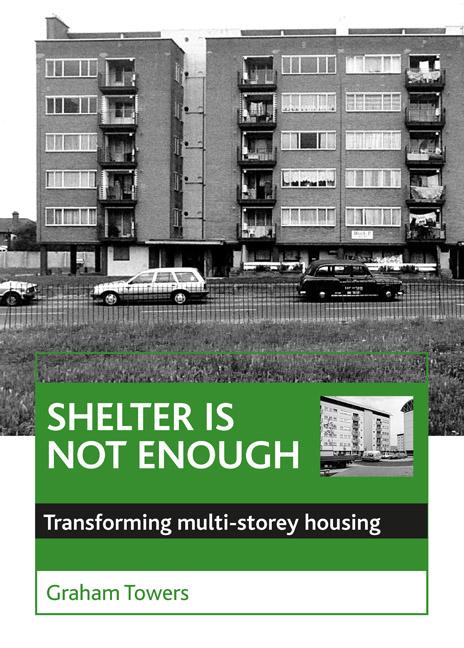Book contents
- Frontmatter
- Contents
- List of figures and tables
- Dedication
- Preface
- Foreword
- one Introduction
- two Forming the multi-storey legacy
- three Politics, economics and housing form
- four Social stigma and community action
- five Redeeming the estates
- six Facets of regeneration
- seven Building a model framework
- eight Prospects for transformation
- nine Ending the estate syndrome
- ten On broader horizons ...
- Bibliography
- Appendix: Case study research
- Index
nine - Ending the estate syndrome
Published online by Cambridge University Press: 05 July 2022
- Frontmatter
- Contents
- List of figures and tables
- Dedication
- Preface
- Foreword
- one Introduction
- two Forming the multi-storey legacy
- three Politics, economics and housing form
- four Social stigma and community action
- five Redeeming the estates
- six Facets of regeneration
- seven Building a model framework
- eight Prospects for transformation
- nine Ending the estate syndrome
- ten On broader horizons ...
- Bibliography
- Appendix: Case study research
- Index
Summary
It has become apparent that all types of multi-storey housing can probably be successfully transformed. The older, smaller estates can be modernised and converted to provide a mix of family housing and smaller flats in a form which mirrors traditional Victorian street patterns. Tower blocks can be technically improved and successfully secured to provide good housing for smaller households and a range of specialised uses. The much maligned deck access estates can be adapted and broken down to provide successful multistorey dwellings. Slab blocks turn out to be the most problematic housing type but, even here, there are solutions which can be attempted. None of these solutions is cheap. Properly done, the effective transformation of multistorey blocks is an expensive exercise. But never so expensive as the more apocalyptic option. Wholesale clearance is the most expensive solution both in fiscal and social terms. It is now clear that regeneration is, almost always, an alternative to demolition. In any comprehensive strategy, however, demolition and part demolition must remain an option. It may be necessary in order to create a better housing mix or to meet strong resident demands.
Nothing can be achieved without adequate funding, but the way in which funding is applied is of critical importance. It is evident that the funding regime has been a key determinant of the shape and form of multi-storey housing. If the problems of urban housing estates are to be effectively resolved, the funding system must embody two key characteristics. First it must allow local communities to establish their own priorities and encourage residents to play an active role in the future of their housing. Second it must be flexible enough to support and encourage a wide range of alternative solutions. Given such flexibility, radical changes can be made to urban estates making them better suited to their residents and more manageable. But physical changes are not enough – social changes are needed too.
Urban estates should not be the preserve of the poorest, the most deprived and the least capable. Such concentrations of disadvantage are self-sustaining. If coupled with a supply of new social housing, the ghetto status which commonly afflicts urban multi-storey estates can be ended. Many families with children and many single residents with special needs are not well housed in multi-storey estates.
- Type
- Chapter
- Information
- Shelter Is Not EnoughTransforming Multi-Storey Housing, pp. 185 - 204Publisher: Bristol University PressPrint publication year: 2000



